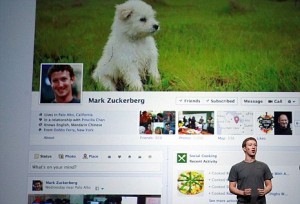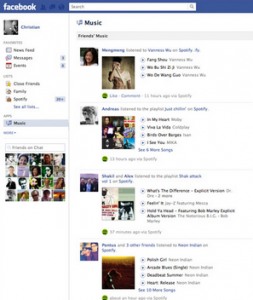September 23, 2011
F8 has now happened. It was an event that was heralded as one that would ‘change the world of social media’ – and that has proved to be true. The Facebook that we know and love has been transformed – with big changes gradually being rolled out. Here we explore how these changes will affect brands:
Facebook becomes an entertainment hub
Facebook’s motto for the F8 conference was ‘Read. Watch. Listen’ – and that neatly sums up the changes that have been made. They have unveiled extensive changes to the social network – including key tie-ups with companies such as Spotify, Netflix, Zynga (who made Farmville) and The Guardian to create a new breed of apps, including video, music, films, and TV apps.
Facebook has now become an entertainment hub allowing users to watch films, listen to music and read newspaper articles via an app without ever leaving the social platform.
Maximising engagement through social apps
It is clear that what all these new features are attempting to do is make it as easy as possible for users to spend long periods of time on Facebook. They are doing this by lowering the barriers to connecting with friends and family and delivering more tailored and rich media content.
To this end, Facebook have introduced a ‘Ticker feed’ which shows all updates in real time at the top right hand corner of your newsfeed page. They also announced a completely redesigned profile page, tagged ‘The Timeline’.
The Timeline
Zuckerberg introduced the new ‘Timeline’ feature which will enable users to give a ‘more complete story’ of who they are. This Timeline is an online scrapbook which he said will “help you tell the story of your life”.
The Timeline presents a stream of information about you. You are, in effect, creating a profile of ‘who you are’ through the photos you’ve posted, all your status updates and the apps you’ve used. Split into multiple columns, the timeline shows all of your updates in one place on an endlessly scrolling page.
Timeline is currently in beta (you probably don’t want to access it straight away unless you’re a developer as it is currently experiencing bugging issues) and will be opt-in to start. However, it will soon become the new default profile page for all users.
How this is good news for brands – a new class of apps
Zuckerberg also explained that Facebook was focusing on making a ‘new class of Open Graph applications’. These apps mean that users can access content such as music and newspaper articles directly within Facebook and let users share what they listen to, watch and read with friends.
This is great news for brands. Based on the ‘Like’ social plug-in developers can now customise ways of sharing their content with new created ‘Listened’, ‘Watched’, and ‘Read’ buttons which will see content posted in users’ timelines or the newly developed live ‘ticker’ stream. So a user’s friends will see the latest music their friends are listening to on Spotify for example, or the film they’ve just watched on Netflix.
The result is that brands have gained an important new way to target Facebook users through advertising. So, by utilising these new buttons – which tells advertisers what musicians, films or publications not only a user likes but also what their friends like – advertisers are being given even more insights into the make-up of their audience. So advertisers on Facebook’s Ads API or those who work with Facebook’s Sales team will be able to reach relevant consumers who might not have directly Liked a Page.
To give an example, rather than just targeting a user who has Liked Lady Gaga’s Facebook Page, brands will be able to target anyone who shared one of her songs through Spotify or any of their friends who clicked ‘Listened’ on a story about her.
These changes will also have an impact on Facebook’s Sponsored Stories ad format. Marketers will now be able to target Sponsored Stories to people based on the content they have shared from apps, such as Netflix or Spotify.
The potential for this type of granular targeting is huge for brands. Though at launch, it is only music, video and readable content that will feature these new feedback buttons, David Fischer, Facebook’s VP of global marketing solutions, told All Facebook that the site is considering releasing more, including a ‘Want’ button for products. This will provide unique opportunities to more and more industries, such as ecommerce, with shopping brands gaining ‘Wants’ on new products they can promote on Facebook.
Brands need to be more engaging than ever
Facebook also introduced a new ‘lightweight’ sharing feature, in order to give its users the ability to share more things without cluttering their friends’ newsfeeds. This means that all ‘lightweight’ information will be shown on the Ticker feed only. So status updates, photos and posted links to articles will be shown on the newsfeed, while Likes or your score on the latest game will be shown on the Ticker feed in real time.
This is to ensure that your newsfeed contains only the most valuable and relevant content. For brands this means that they must have a robust and effective strategy in place to deliver compelling content that will engage fans and optimises how much they interact with you.
The changes announced at F8 provide a challenge to brands – but also opportunities. They must create truly compelling content that fans want to engage with. This is all about increasing your Facebook EdgeRank – in the face of these new updates it will be vital to alter and optimise engagement strategies and ensure your brand is one that fans want to see in their newsfeeds.



Comments